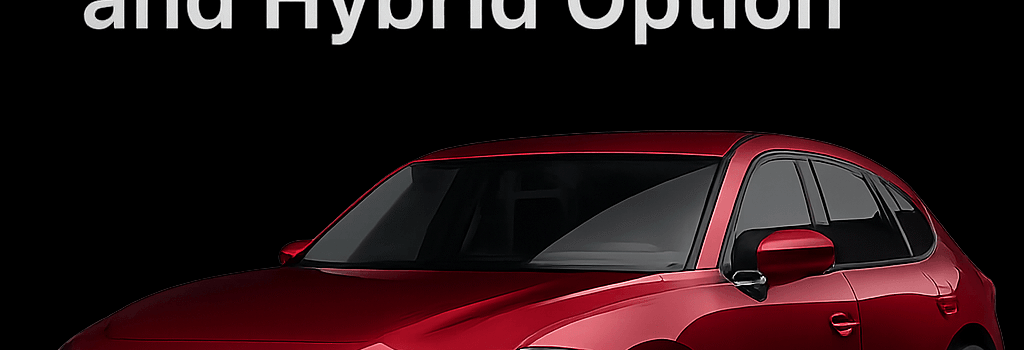Mazda Unveils Next-Gen CX-5 with Skyactiv-Z Engine and Hybrid Option

The third-generation Mazda CX-5, set to arrive in Europe late 2025 and North America in early 2026, brings a suite of technical upgrades under its evolutionary Kodo design. Beyond refined styling and premium cabin materials, Mazda is enhancing powertrain efficiency, in-car software, and market positioning with the upcoming CX-5 lineup.
Powertrain Innovations
Mazda continues its Skyactiv philosophy with a revised Skyactiv-G 2.5L inline-four gasoline engine for 2026 models. Rated at 187 hp (140 kW) and 186 lb-ft (252 Nm) of torque, this unit features a 13.5:1 compression ratio, improved cooling passages, and low-friction piston rings. Advanced direct injection operates up to 200 bar, while variable valve timing on both cams optimizes combustion across the rev range.
Skyactiv-Z Concept
The centerpiece for the 2027 model year is the Skyactiv-Z four-cylinder gasoline engine. According to Mazda engineers, it maintains a stoichiometric air–fuel ratio (λ=1.00) at all loads, using a dual oxygen sensor closed-loop system. A new variable tumble intake port and high-turbulence piston design deliver rapid flame propagation, targeting a 5% thermal efficiency boost over the current Skyactiv-G. Mazda’s patented sequential multi-hole injectors and a 48-volt mild-hybrid assist will reduce pumping losses during cold starts and at idle.
Hybrid System Deep Dive
For the first time in the CX-5 family, a dedicated hybrid variant debuts in 2027. Mazda leverages Toyota’s 2.5L Dynamic Force Atkinson-cycle engine paired with an electronic continuously variable transmission (eCVT) and a 1.8 kWh lithium-ion battery pack. Combined output is estimated at 220 hp (164 kW) and 200 lb-ft (271 Nm). The hybrid system uses regenerative braking and a DC–DC converter to optimize 48-volt accessory loads.
“Integrating the Dynamic Force engine required recalibration of Mazda’s G-Vectoring Control Plus chassis system to maintain our signature driving feel,” says Dr. Keiko Tanaka, Chief Engineer for Electrified Powertrains at Mazda Motor Corporation.
Infotainment and Connectivity
Mazda’s latest cockpit centers on Android Automotive OS (AAOS) with Google Automotive Services (GAS). The new head unit uses a quad-core ARM Cortex-A53 CPU, 4 GB LPDDR4 RAM, and 64 GB eMMC storage. Over-the-air (OTA) updates enable map and system upgrades, while dual-SIM 5G connectivity supports high-speed streaming and real-time traffic. A 10.25″ HD touchscreen integrates vehicle settings, Google Maps, and voice assistant. Wireless Apple CarPlay and Android Auto remain available via Bluetooth and Wi-Fi.
Manufacturing and Market Strategy
The CX-5 continues production at Mazda’s Hofu factory in Japan for global markets and at Toyota-Mazda Manufacturing in Huntsville, Alabama for North America. Today’s announcement follows Mazda’s $2 billion investment in electrification by 2027. Regional tuning—such as suspension damping rates and steering ratios—is calibrated locally, ensuring the CX-5 meets diverse customer preferences while adhering to Euro 7 and EPA Tier 3 emissions regulations.
Regulatory and Environmental Impact
- Euro 7 compliance through upgraded three-way catalytic converters and particulate filters in gasoline engines.
- Target CO₂ fleet average reduction of 30% by 2030 via hybrid and mild-hybrid roll-out.
- Life-cycle analysis considers sustainable materials: 30% bioplastics and increased use of recycled aluminum in body panels.
Comparative Segment Analysis
- Against compact SUVs like Honda CR-V and Toyota RAV4, the CX-5 hybrid targets sub-40 mpg combined (WLTP), leveraging Mazda’s emphasis on dynamic handling.
- Infotainment benchmarks: AAOS places Mazda on par with Volvo’s Sensus and ahead of proprietary systems from domestic rivals.
- Price positioning is expected at $29,000–$38,000 MSRP, undercutting European premium brands while offering near-luxury interiors.
Expert Analysis: Efficiency and Performance
Industry analysts note Mazda’s move toward a fully stoichiometric four-cylinder is ambitious. Dr. Alan Roberts of AutoTech Insights observes, “Maintaining λ=1.00 under transient loads demands precise actuator control and robust sensors—achieving real-world efficiency gains will validate Mazda’s engineering claims.”
With the 2026 CX-5 and its 2027 hybrid sibling, Mazda aims to balance driving engagement, fuel economy, and digital sophistication in the hotly contested compact SUV market.